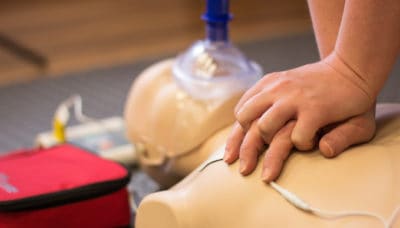Introduction
In our hectic globe, emergencies can strike without warning. Whether it's a minor injury, a clinical emergency, or a lethal scenario, understanding just how to provide first aid can make all the distinction. This is where a First Aid course enters into play. Many people might wonder what they can obtain from such training, and this post intends to clarify that.
By joining in a First Aid and mouth-to-mouth resuscitation course, you don't simply learn about bandaging injuries or performing mouth-to-mouth resuscitation; you outfit on your own with important abilities that might conserve lives. So, just what will you find out in a detailed program? Let's dive into the details.
First Aid Basics: What You'll Find out in a Detailed Course
Understanding First Aid
What is Initial Aid?
First aid refers to the initial support offered to a person suffering from an injury or ailment up until specialist clinical assistance arrives. It includes different methods and skills ranging from basic injury care to lifesaving techniques like CPR (Cardiopulmonary Resuscitation).
Importance of First Aid Training
Why Ought to You Take an Emergency Treatment Course?

Taking a First Help course is vital for a number of reasons:

- Confidence: Knowing exactly how to respond in emergencies can infuse confidence. Life-Saving Abilities: The ability to do mouth-to-mouth resuscitation or help with choking can conserve lives. Career Development: Several occupations need accreditation in first aid. Community Responsibility: Learning ways you can help others effectively.
Overview of CPR
What is CPR?
CPR, or Cardiopulmonary Resuscitation, is an emergency procedure done when someone's heart beat or breathing has stopped. It combines breast compressions with rescue breaths to maintain blood circulation and oxygenation up until professional assistance arrives.
The Structure of a Comprehensive Emergency Treatment Course
What Does a First Aid Course Include?
A well-rounded First Help and CPR course usually covers the following topics:
Introduction to First Aid Legal and Ethical Considerations Scene Safety Basic Life Assistance (BLS) CPR Techniques Choking Relief Wound Treatment Management Burn Treatment Managing Shock Recognizing Clinical Emergencies Using an Automated External Defibrillator (AED)Legal Facets of First Aid
Are There Legal Ramifications Associated With Offering First Aid?
Yes, giving emergency treatment does bring lawful obligations called "Good Samaritan legislations." These laws secure individuals that assist others in emergency situations, gave their activities are affordable and not reckless.
Scene Safety and security: The Initial Step
How Do You Make sure Scene Safety?
Ensuring scene safety and security includes analyzing the setting before coming close to the sufferer:
- Look for potential threats (web traffic, fire). Make sure it's safe for both you and the victim.
Basic Life Assistance (BLS)
What Role Does BLS Play in Emergency Situations?
Basic Life Support consists of the principles of preserving click here life features till further clinical help gets here. This section covers crucial abilities such as:
- Checking responsiveness Activating emergency situation services Performing premium chest compressions
Advanced CPR Techniques
What Are Advanced Techniques Covered in Mouth-to-mouth Resuscitation Courses?
Advanced techniques may include:
- Two-rescuer CPR Use of barrier devices for rescue breaths Special factors to consider for infants and children
Choking Alleviation Techniques
How Do You Help A Person That is Choking?
Choking alleviation entails 2 vital techniques:
The Heimlich maneuver for adults. Back strikes and breast thrusts for infants.Wound Treatment Management
How Do You Correctly Take Care Of Wounds?
Effective injury monitoring involves:

- Cleaning the injury with saline or clean water. Applying antibiotic ointment. Covering it with clean and sterile dressings.
Burn Treatment
What Work Techniques for Dealing With Burns?
Burn treatment differs by level:
Cool the melt under running water. Cover it with non-stick dressings. Seek medical focus for extreme cases.Managing Shock
How Is Shock Recognized and Treated?
Recognizing shock consists of searching for signs and symptoms like light skin, rapid pulse, or complication:
Lay the individual down. Elevate their legs unless there are injuries protecting against this. Keep them relax until aid arrives.Recognizing Clinical Emergencies
What Kinds of Medical Emergencies Should You Be Aware Of?
Common medical emergency situations include:
- Heart attacks Stroke Severe allergic reactions Recognizing these conditions assists you act quickly.
Using an Automated External Defibrillator (AED)
How Do You Make use of an AED Correctly?
Using an AED involves transforming it on, attaching pads according to images on the gadget, and complying with voice motivates carefully.
Importance of Continual Learning
Why Is Constant Knowing Important in First Aid Training?
Continuous understanding guarantees you stay updated on best methods and new protocols in first aid care.
FAQs About First Aid Courses
What Is Consisted of in a Requirement Emergency Treatment Course?- A standard course generally covers fundamental life support, injury monitoring, choking alleviation strategies, and legal considerations.
- Most training courses range from 6 hours to 16 hours relying on the deepness of content covered.
- Yes, upon successful conclusion of a lot of programs, participants obtain a first aid certificate, which is typically legitimate for two years.
- Yes! Numerous organizations offer on-line programs that supply flexible learning environments while still being effective.
- Absolutely! Hands-on method is crucial for mastering abilities like breast compressions and utilizing AEDs effectively.
- Generally, there are no age restrictions; nevertheless, participants must be mentally experienced to discover these life-saving skills effectively.
Conclusion
Enrolling in a thorough first aid course outfits individuals with necessary expertise that can conserve lives throughout emergency situations-- whether in your home, job, or out in public rooms! From comprehending fundamental life assistance treatments like mouth-to-mouth resuscitation to learning exactly how to manage wounds effectively or recognize indications of shock-- these training courses offer indispensable training that anybody can profit from!
As we navigate through our daily lives filled with unpredictability-- what better way than preparing ourselves with knowledge acquired from organized training sessions focused on saving lives?
In verdict-- if you're pondering using up any type of type of first-aid training-- never ever wait! Furnish yourself today with these effective devices since preparedness genuinely makes all the difference when every second counts!